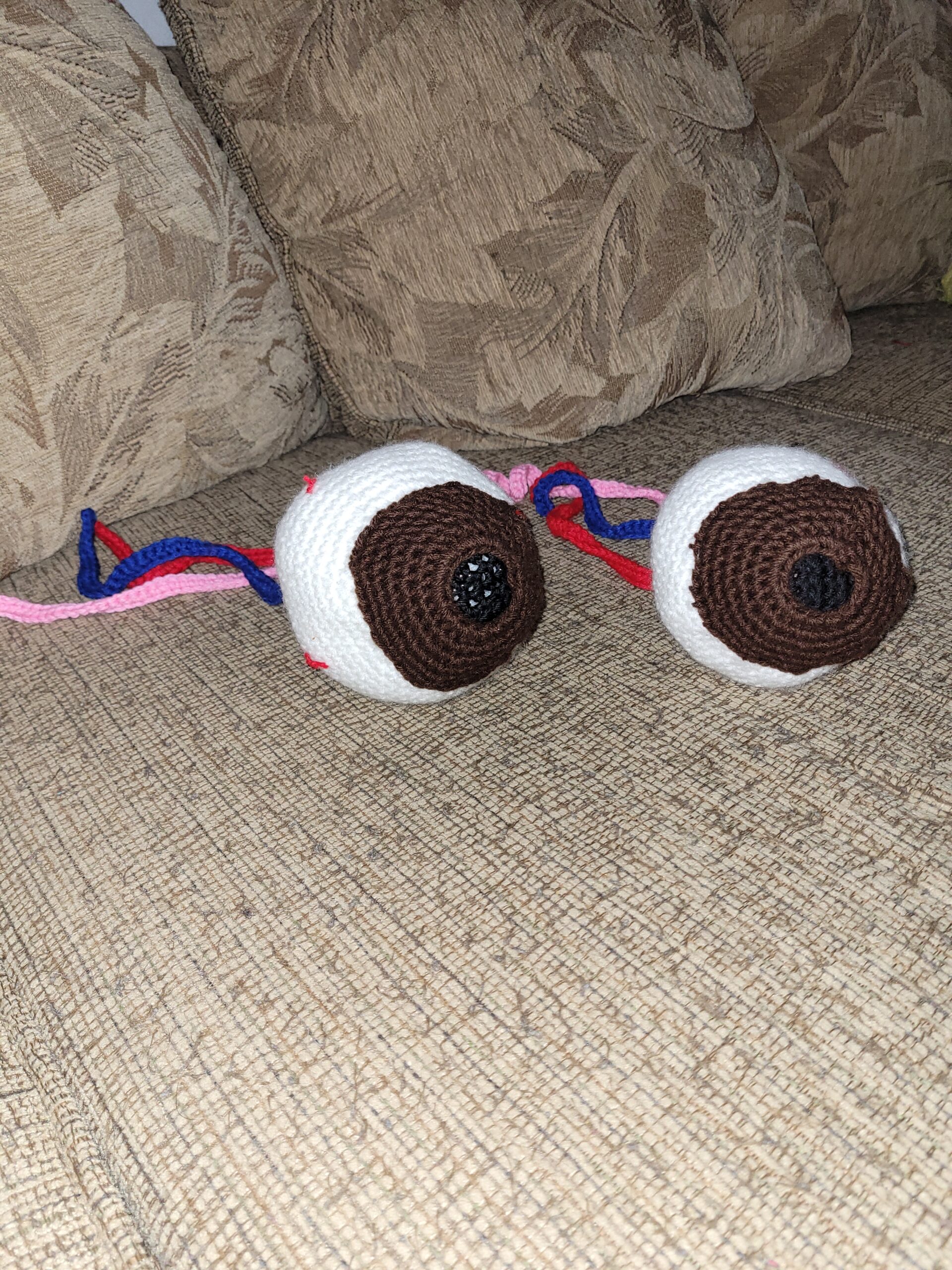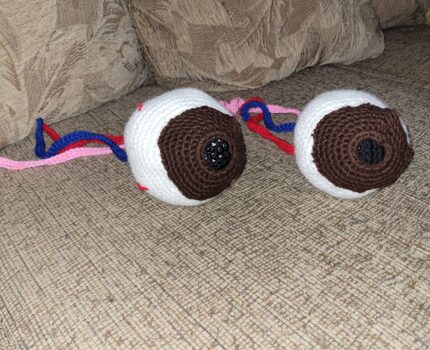These are my eyeballs, not to scale. The eyeball on the left is the one with glaucoma (you can see through the pupil) while the eyeball on the right is a normal eyeball. You can see the veins and nerve coming out of the back. The one thing you cannot do with this is feel them. Glaucoma causes pressure inside the eyeball, so the eyeball on the left is harder than the one on the right.
On a side note, I’d be happy to mail these up there so you can play around with them.


Abstract
Glaucoma is an eye disease that affects the optic nerve in the eye. It can cause vision problems, including blindness. Generally, the cause of glaucoma is a buildup of fluid within the eyes which creates pressure in the eyes above the typical level of 10-21 mmHg. that blocks the optic nerve. Glaucoma is the leading cause of blindness in adults over the age of 60, and there are no warning signs until it is in an advanced stage. Early symptoms are patch blind spots, and other symptoms include tunnel vision, severe headaches, nausea, vomiting, eye redness, eye pain, and blindness.
Glaucoma specifically first affects the axons of the retinal ganglion cells that enter the optic nerve in the laminar region of the eye. One reason for this is the loss of support from supporting glial cells.
There are several treatments available for glaucoma, focused around reducing intraocular pressure (IOP), which is the most important modifiable risk factor for glaucoma. Prostaglandin analogues are a topical treatment method that reduces pressure by 24-29%. They target prostaglandin receptors, and help with uveoscleral outflow. When prostaglandin analogues don’t work because the pressure in the eye is too high, there are several other treatment options. One is Argon Laser Trabeculoplasty (ALT), which is an outpatient surgery using lasers to reduce eye pressure by 75%. The third treatment option is trabeculectomy, where a tiny cut is made in the eye to drain fluid and reduce pressure. Glaucoma implant surgery is also a treatment method, and involves a shunt being interested into the eye.
Hi! I really liked your project. I think the knitting project is a super cool 3-D visual representation, and the eyes look super good! Your paper was really informative and I feel like you did a good job of explaining the disease generally, then talking about the structures in the body involved, and then talking about treatments. Good job I really enjoyed reading it 🙂